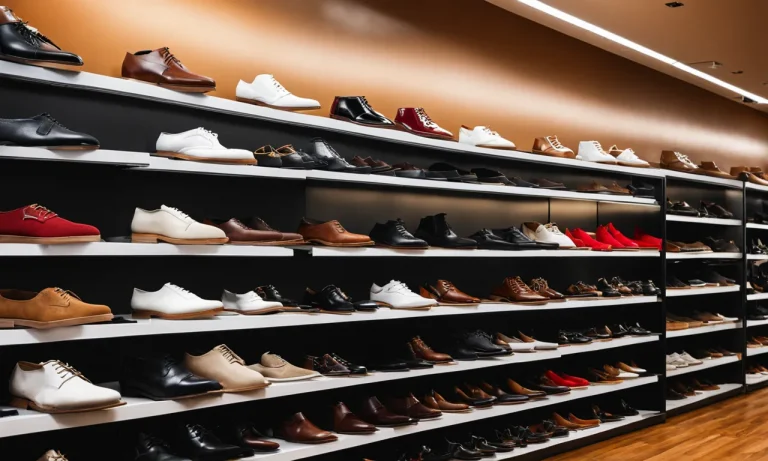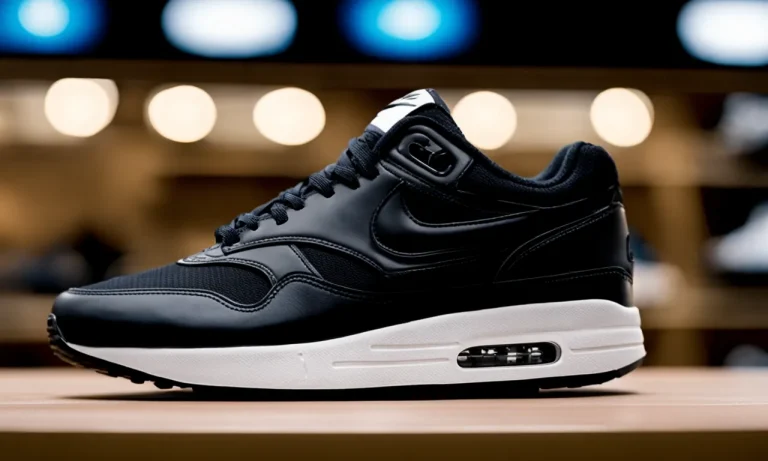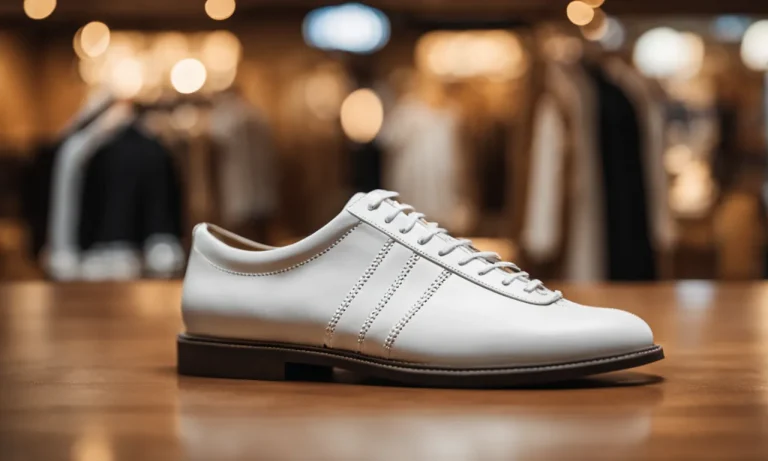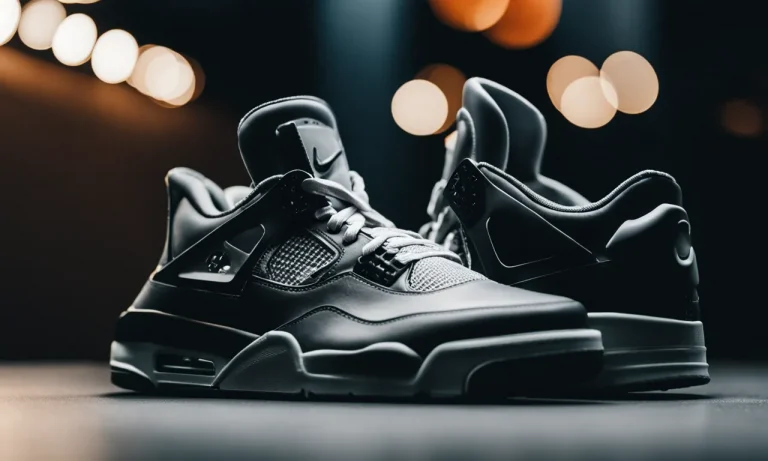Finding the perfect fit for boots can be tricky. If they’re too tight, your feet will be uncomfortable. But if they’re too loose, you’ll be dealing with blisters and heel slippage. So what’s the right amount of snugness for the ideal boot fit? Let’s take a deeper look.
If you’re short on time, here’s a quick answer: aim for snug but not painful. There should be no pressure points or cramped toes, but your heel shouldn’t be slipping either.
In this comprehensive guide, we’ll cover how boots should fit, signs that they’re too tight or loose, tips for breaking in tight boots, how to adjust loose boots, and reviews of the most comfortable boot brands on the market.
What Does Proper Boot Fit Feel Like?
When it comes to boots, finding the right fit is essential for both comfort and performance. But what exactly does a proper boot fit feel like? Let’s explore some key aspects to consider when determining if your boots fit correctly.
Snug But Not Too Tight
A properly fitting boot should feel snug around your foot and ankle without being overly tight. You want to avoid any excessive pressure or discomfort. A good way to test the fit is by wearing the boots and standing up. Your feet should feel secure and supported, but not constricted.
No Pressure Points
Another important aspect of a proper boot fit is the absence of pressure points. Pressure points can cause discomfort, blisters, and even pain. When trying on boots, take note of any areas where you feel excessive pressure or rubbing.
If you notice any discomfort, it may be a sign that the boots are not the right fit for you.
Toes Have Some Wiggle Room
While the boot should be snug, it’s important to have some wiggle room for your toes. Your toes should not be cramped or squished together. A good rule of thumb is to be able to wiggle your toes comfortably inside the boot.
This allows for proper circulation and prevents numbness or discomfort during prolonged wear.
Heel Secured in Place
One crucial factor to consider is the fit around the heel. Your heel should be securely held in place without any slipping or excessive movement. If your heel slides up and down or side to side when walking, this can lead to blisters and discomfort.
Ensure that the boot provides a snug fit around the heel area for optimal support.
Remember, everyone’s feet are unique, and what may be a perfect fit for one person may not work for another. It’s always a good idea to try on different boots and sizes to find the best fit for your feet. If you’re unsure, seeking advice from a professional shoe fitter can be beneficial.
Signs Your Boots Are Too Tight
Feet Go Numb
One of the most obvious signs that your boots are too tight is when your feet start to go numb. This happens because tight boots restrict blood flow to your feet, leading to a tingling or numbing sensation.
If you find yourself constantly having to shake out your feet or wiggle your toes to try and regain feeling, it’s a clear indication that your boots are too tight.
Toes Feel Cramped
If you feel like your toes are being squeezed or cramped inside your boots, it’s a sure sign that they are too tight. Your toes should have enough room to wiggle and move freely. When your boots are too tight, they can cause discomfort and even lead to blisters or corns on your toes.
Don’t ignore this sign, as it can lead to long-term foot problems if not addressed.
Painful Pressure Points
When your boots are too tight, they can create painful pressure points on your feet. These pressure points can occur on the sides, top, or bottom of your feet, depending on where the boots are tightest.
The constant rubbing and friction can lead to sores or calluses, making each step a painful experience. If you notice any redness or irritation on certain areas of your feet after wearing your boots, it’s time to consider whether they are too tight.
Difficulty Walking Normally
Another clear sign that your boots are too tight is if you find it difficult to walk normally. Tight boots can restrict your range of motion, making it challenging to take natural steps. You may notice yourself walking in a stiff or awkward manner, which can put unnecessary strain on your feet, ankles, and knees.
If you feel like you’re waddling or struggling to move comfortably in your boots, it’s a strong indication that they are too tight.
Remember, wearing boots that are too tight not only compromises your comfort but also your foot health. It’s essential to ensure that your boots fit properly to avoid any long-term damage. If you experience any of these signs, it’s time to reconsider your boot size or style to find the perfect fit.
Your feet will thank you!
Signs Your Boots Are Too Loose
Heel Slipping
One of the telltale signs that your boots are too loose is when your heels start slipping up and down as you walk. This can be not only annoying but also potentially hazardous, as it can lead to blisters and discomfort.
If you notice that your heels are constantly lifting out of the boots with each step, it’s a clear indication that the boots are too loose for you.
Toes Hitting Front While Walking
Another sign that your boots are too loose is when your toes repeatedly hit the front of the boots while you are walking. This can cause discomfort and pain, as your toes are constantly being jammed against the hard surface of the boots.
It can also lead to toenail damage or other foot problems if not addressed. If you find that your toes are consistently hitting the front of your boots, it is a clear indication that they are too loose.
Blisters Forming
If you notice blisters forming on your feet after wearing your boots, it could be a sign that they are too loose. Blisters occur when there is excess friction between your foot and the boot, and this friction is often caused by the foot moving around inside the boot due to a loose fit.
Blisters can be painful and take time to heal, so it’s important to address the issue of loose-fitting boots to prevent further discomfort.
Foot Moves Inside Boot
When your boots are too loose, your foot may slide and move around inside the boot while you walk or engage in any physical activity. This can lead to instability and an increased risk of ankle sprains or other injuries.
If you find that your foot is not securely held in place within the boot and has excessive movement, it’s a clear sign that your boots are too loose for you.
It is important to mention that the signs mentioned above may vary depending on the individual’s foot shape and personal comfort preferences. However, if you experience any of these signs, it’s worth considering getting your boots adjusted or replaced to ensure a proper fit and avoid any potential discomfort or injuries.
Tips for Breaking in Tight Boots
Wear Thick Socks
When breaking in tight boots, one of the first things you can try is wearing thick socks. This can help create some extra padding and cushioning between your feet and the boots, allowing for a more comfortable fit.
Thick socks can also help to stretch out the boots slightly, making them easier to break in over time. Remember to choose socks made from breathable materials to prevent excessive sweating and discomfort.
Use a Boot Stretcher
If wearing thick socks alone doesn’t provide enough relief, you can consider using a boot stretcher. A boot stretcher is a handy tool designed to stretch the width or length of boots, helping to alleviate tightness.
Simply insert the stretcher into your boots and adjust it according to the desired level of stretching. Leave the stretcher in overnight or for a few days, and gradually increase the stretching until you achieve the desired fit.
Try on Boots at the End of the Day
When purchasing or breaking in tight boots, it’s best to try them on at the end of the day. This is because our feet tend to swell throughout the day, especially after being on our feet for extended periods.
By trying on boots when your feet are at their largest, you can ensure a better fit when they are more likely to be in a slightly swollen state. This can help prevent discomfort and tightness when wearing the boots for longer periods.
Walk Around Inside the House
Walking around inside the house is a great way to break in tight boots without subjecting your feet to a long day of discomfort. By wearing the boots indoors, you can gradually get used to the feel and allow the material to mold to the shape of your feet.
Start with short walks and gradually increase the time spent wearing the boots. This will help to loosen them up and make them more comfortable for extended wear.
Use Leather Conditioner
Leather conditioner can be a useful tool when breaking in tight leather boots. Conditioning the leather can help soften it, making it more pliable and less likely to cause discomfort. Apply the conditioner according to the manufacturer’s instructions, focusing on the areas where the boots are tight.
Massage the conditioner into the leather and allow it to absorb. Repeat this process as needed until the boots become more comfortable.
Remember, breaking in tight boots takes time and patience. It’s important to listen to your body and not push through excessive discomfort. If you experience persistent pain or discomfort, it may be best to consult with a professional shoe repair specialist for further assistance.
How to Adjust Loose Boots
Having loose boots can be uncomfortable and even lead to foot pain or injuries. Fortunately, there are several ways to adjust loose boots and improve the fit. Here are some effective methods:
Add an Insole
One way to adjust loose boots is by adding an insole. This extra layer of cushioning not only provides comfort but also helps fill in the extra space inside the boot. You can find a variety of insoles in different thicknesses and materials to suit your needs.
Simply slip the insole into the boot and see if it improves the fit. If needed, you can try adding multiple insoles or combining them with other methods for a snugger fit.
Wear Thicker Socks
Another simple solution is to wear thicker socks. Thicker socks can help take up some of the extra space inside the boot, providing a tighter fit. Look for socks made from materials like wool or thermal fabrics, as they tend to be thicker and provide better insulation.
Keep in mind that wearing thicker socks may affect the overall comfort and breathability of your boots, so choose socks that strike a balance between fit and comfort.
Lace Up Tighter
Proper lacing techniques can make a significant difference in the fit of your boots. Start by loosening the laces and then re-lace your boots, making sure to pull the laces tight at each eyelet. This will help distribute the pressure evenly and snugly secure your foot in place.
Additionally, using the “lock lacing” technique can help prevent your boots from becoming loose throughout the day. Simply cross the laces over each other at the top eyelets, then thread them through the opposite side and tie them tightly.
This creates a secure lock that keeps the laces from loosening over time.
Use Heel Grips or Heel Lock Lacing
If the issue is specifically with heel slippage, you can try using heel grips or heel lock lacing. Heel grips are adhesive pads that you place at the back of your boot’s heel to prevent it from slipping.
Heel lock lacing, on the other hand, involves an alternative lacing pattern that secures the heel area more tightly. Both methods can be effective in reducing heel movement and improving the overall fit of your boots.
Apply Moleskin Padding
If certain areas of your foot are experiencing rubbing or discomfort due to the loose fit, applying moleskin padding can provide relief. Moleskin is a soft, adhesive material that can be cut to size and placed on areas where friction occurs.
This extra layer of padding helps reduce rubbing and provides a more comfortable fit. Make sure to apply the moleskin to clean and dry skin to ensure proper adhesion.
By using these methods, you can adjust loose boots and achieve a better fit. Remember to experiment with different techniques and combinations to find what works best for you. Happy trekking!
Most Comfortable Boot Brands
When it comes to finding the perfect pair of boots, comfort is a top priority for many people. Luckily, there are several brands that are known for producing some of the most comfortable boots on the market. Here are a few brands that consistently receive high praise for their comfort:
Timberland
Timberland is a brand that has become synonymous with comfort. Their boots are known for their cushioned insoles and supportive construction, making them a popular choice for those who spend long hours on their feet.
Whether you’re hiking through rugged terrain or strolling city streets, Timberland boots are designed to keep your feet feeling great.
Clarks
Clarks is another brand that is well-regarded for their comfortable boots. With a focus on quality materials and innovative designs, Clarks offers a range of boots that provide excellent support and cushioning.
Their boots are also known for their stylish yet timeless designs, making them a great choice for both comfort and fashion.
Blundstone
Blundstone is an Australian brand that has gained a loyal following for their comfortable and durable boots. Their boots are crafted with premium leather and feature shock-absorbing soles, ensuring all-day comfort.
Whether you’re working on your feet or exploring the great outdoors, Blundstone boots are designed to keep you comfortable and supported.
UGG
UGG is a brand that is famous for their cozy sheepskin boots, but they also offer a range of styles that prioritize comfort. UGG boots are lined with plush sheepskin, providing warmth and cushioning. They also feature flexible outsoles that allow for natural movement, making them a popular choice for those looking for both comfort and style.
Red Wing
Red Wing is a brand that has been crafting high-quality boots for over a century. Known for their durability and comfort, Red Wing boots are made with premium materials and carefully engineered to provide excellent support.
Whether you’re working in construction or simply want a reliable pair of boots for everyday wear, Red Wing is a brand worth considering.
Dr. Martens
Dr. Martens is a brand that is beloved by many for their iconic boots and unmatched comfort. With their signature air-cushioned soles and durable construction, Dr. Martens boots offer both style and comfort.
Whether you’re rocking a classic pair of black boots or opting for a more colorful design, Dr. Martens boots are sure to keep your feet feeling great.
When it comes to finding the most comfortable boots, these brands consistently deliver. Whether you’re looking for boots for work, outdoor adventures, or everyday wear, you can’t go wrong with any of these trusted brands.
Conclusion
Finding the sweet spot between tight and loose boots comes down to trial and error. Focus on a snug fit with no uncomfortable pressure points or slippage. Breaking in tight boots takes time, while loose boots can be adjusted as needed.
Opting for high-quality leather boots from reputable brands also improves comfort and fit. With the right pair, your boots will mold perfectly to your feet for all-day wear.
Now that you know what to look for in the ideal boot snugness and how to fix any fit issues, you can shop confidently for your next pair. Just remember—comfort is key when selecting boots built to last.






